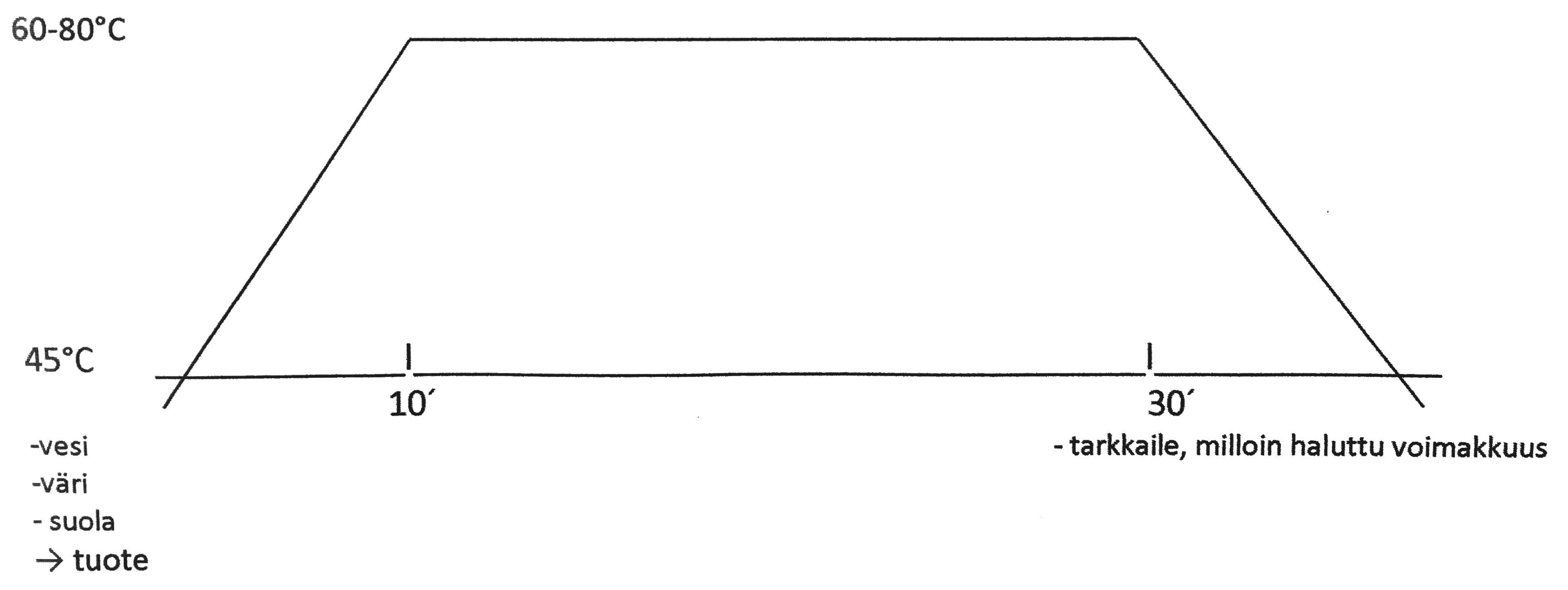OK7 Costume Workshop
Värjäyksen perusteet
YLEISOHJEET
- Tutustu tilakohtaisiin työturvallisuusohjeisiin ja muista asianmukainen suojautuminen.
- Valitse menetelmä ja aineet käyttökohteesi mukaan.
- Jos olet epävarma jonkin kemikaalin käytöstä, ole yhteydessä työpajamestariin.
3. Värjääminen suoraväreillä
3.1. Dylon -resepti
- Kiehauta vettä vedenkeittimessä.
- Ota useampi (5) lasi tiskipöydälle ja kaada kiuhuva vesi laseihin (voit lisätä suolaa teelusikan kärjellisen).
- Mittaa teelusikan kärjellinen väriä lasiin ja sekoita.
Esimerkiksi
Lasi 1: Väriä A 100%
Lasi 2: Väriä B 100%
Lasi 3: Väriä A 50% + B 50%
Lasi 4: Väriä A 25% + B 75%
Lasi 5: Väriä B 25% + A 75%
- Laita materiaalitilkut liemiin ja odota hetki.
- Kuivaa tilkut esim. silitysraudalla ja arvioi värisävy.
- Jatka kokeilua niin kauan kun oikeat värit ja suhdeluku on löytynyt.
- Reseptiä varten päätä värimäärä: 0,1-6% kankaan kuivapainosta = X grammaa.
- Laske kuinka paljon (g) tarvitset väriä A ja B.
Esimerkkiresepti (kattilavärjäys)
Materiaali: puuvilla T-paita 200g.
Esikäsittely: pesu / kastelu.
Liemisuhde: kattilan mukaan ja niin, että tuotetta voi liikutella vaivatta liemessä.
Värimäärä:
Täysväri 2-3% kuivapainosta = 20-30g väriä / 1kg materiaalia.
Tummat sävyt: 4-6%.
Vaaleat sävyt: 0,1-2%.
Laskukaava täysvärille 2%: 0,02 (%) x 200 (g) = 4g väriä.
Apuaineet: Suola 125g / 5g väriä.
Värjäyskäyrä:

Esimerkkiresepti (konevärjäys)
Materiaali: puuvilla T-paita 200g.
Esikäsittely: pesu.
Liemisuhde: 20L on riittävä määrä isollekin kangasmäärälle, kun materiaali on kokoajan liikkeessä koneessa (0,200kg x 20L = 1:200 on todella väljä liemi).
Värimäärä: kts. edellä.
Apuaineet: suola 125g / 5g väriä, koneelliseen vähintään 100g suolaa.
Värjäysohjelma: valitse koneesta sopiva värjäysohjelma ja vesimäärä. Katso tarkemmat ohjeet värin ja apuaineiden lisäämisestä koneeseen kohdasta 3.3. Koneella värjäys.
Huom! Villalle on ohjelmoitu omat värjäysohjelmat, käännä lämpötilan valitsin asentoon 1 "hidas lämmitys".
